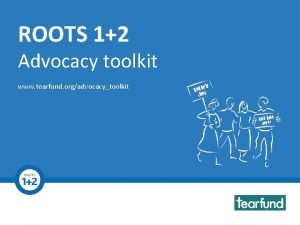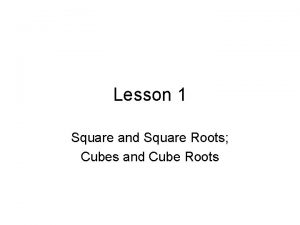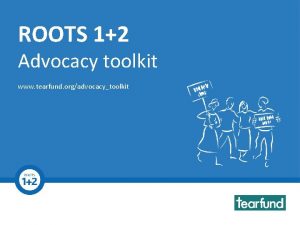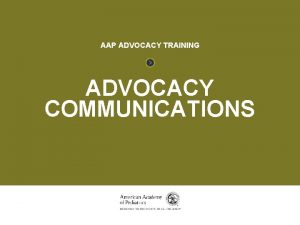ROOTS 12 Advocacy toolkit Toolkit www tearfund orgadvocacytoolkit






- Slides: 6

ROOTS 1+2 Advocacy toolkit Toolkit www. tearfund. org/advocacy_toolkit

Section G 5 Advocacy Cycle Stage 4 Taking action: Difficult political contexts

Section G 5: What characterises a ‘difficult political context’? • The government may be corrupt and abuse its power • Citizens may be prevented from engaging in political activity and advocacy work • Electoral opposition may be treated with hostility • There may be repeated political and civil violence • One political party may dominate and opposing political parties may be weak or non-existent

Section G 5: Why do advocacy in a difficult political context? • It can open up civil society space, enabling civil society to engage with the government • It can encourage changes in the accountability and transparency of government and other institutions • It can strengthen civil society and empower citizens, so that communities can engage in decision-making • It can build the capacity of governments and open them up to ideas and opportunities

Section G 5: Preparing for advocacy in a difficult political context • • Build intentional strategic relationships ahead of time Seize opportunities when they arise Link it into existing activities Be aware of cultural norms and worldviews Acknowledge and confront fear Choose an advocacy issue with wisdom Develop a clear message Understand how government works

• • Section G 5: Doing advocacy in a difficult political context Use contextually appropriate terminology Be collaborative, not confrontational Avoid bribery and corruption Use indirect approaches to access advocacy targets Be willing to model and share good practice Create a vision for change Use contacts outside the country Non-violent resistance










